Pushing off from the dock on a boat called the Capelin, Sandy Milner’s small team of scientists heads north, navigating through patchy fog past a behemoth cruise ship. As the Capelin slows to motor through humpback whale feeding grounds, distant plumes of their exhalations rise from the surface on this calm July morning. Dozens of sea otters dot the water. Lolling on backs, some with babes in arms, they turn their heads curiously as the boat speeds by. Seabirds and seals speckle floating icebergs in this calm stretch of Alaska’s Glacier Bay.
Some two hours later, the craft reaches a rocky beach where Wolf Point Creek meets the sea. The creek is a relatively new feature on the landscape: Land at its mouth first became ice-free in the 1940s due to the melting and retreat of a glacier. It took shape through the 1970s, fed by a mountain lake that slowly formed as an isolated chunk of glacier ice slowly melted. Wolf Point Creek is special because almost its entire life span — from the first, sparse trickles melting out under the ice edge to a mature stream ecosystem teeming with aquatic life, from tiny midge larvae to small fish, and with willows and alder weaving along its edges — is known in intimate detail, its history painstakingly documented.
Milner, a stream ecologist at the University of Birmingham in the UK, has returned almost annually to this spot since the 1970s to catalog how life — particularly aquatic invertebrates — has arrived, thrived and changed over time. He was here to observe meager midges in 1977 and to spot a hundred prospecting pink salmon in 1989. A decade later, his team cataloged 10,000 of the fish spawning in Wolf Point Creek.
The creek now supports all manner of creatures that make their living on its riches, from tiny algae to midges to salmon and their predators. Salmon will soon be arriving, and some of their ardent fans are here today. As National Park Service boat captain Justin Smith idles the motor, preparing to let the crew wade ashore, he casually mentions that a mother brown bear and cubs were recently sighted. Sweeping the crescent-shaped shoreline from left to right with binoculars, he stops and announces, “There she is,” pointing to the far side of the beach. Perhaps 500 meters away, a massive, sandy-brown head chomps on tall grass as three dark brown cubs scamper at her feet.
“Do you still want me to drop you off?” Smith asks. Milner nods and vocalizes consent. The wader-clad crew disembarks into shallow water and heads to the beach, backpacks loaded with collecting gear.

This spot — where Wolf Point Creek meets Muir Inlet — is a dynamic place. Once entirely icebound, Muir Inlet is now a watery expanse over 20 miles long. The inlet is part of the even more massive Glacier Bay that boasts more than a thousand glaciers — at least for now. Over the past 200 years, the glaciers here have receded rapidly as the planet has warmed. Alaskan glaciers are among the fastest-shrinking on Earth, making this place a natural laboratory for ecologists.
How will the ecosystems change? Glacial melting is shining a spotlight on the science of ecological succession, the name given to the patterns of arrival of one species after another as they show up in habitats previously lacking in life. There are longstanding ecological debates around succession that the work by Milner and others may help to settle.
And how will salmon adapt? Though wild salmon are known for their homing instincts, not all return to their natal streams. That’s important in a warming climate, because the fish that stray can colonize new streams that form where glaciers are melting — places long covered in ice. As streams in traditional salmon spawning grounds to the south become increasingly inhospitable with warming waters, some fish are, indeed, dispersing to new regions, filling new niches that open up.
New streams are creating conundrums, too, including for Indigenous people whose livelihoods depend heavily upon salmon. Some now find salmon shifting to spawn in places unprotected from development. Tribes and nations may be excluded from fishing access to these new habitats, even when their rights, on paper, are legally enshrined.
Succession: An ecological obsession
Milner first arrived in Glacier Bay in 1977 as a University of London graduate student in his mid-twenties, lured by a Time-Life book about the region and captivated by the opportunity to witness a fundamental ecological process in real time. He wanted to better understand how natural systems gradually change: how species arrive, survive and persist to form communities in brand new habitats like these young streams, how one community gives way to another.
Known as primary succession, this process of change is one of the oldest concepts in ecology, engrossing scientists since the discipline’s dawn. After the dramatic 1980 eruption of Mount Saint Helens, for example, life in the volcanic blast zone started fresh. At first, the catastrophically altered landscape appeared lifeless. But over time, lightweight seeds and insects swept in on the breeze. Seeds grew into plants, attracting more insects, plus birds, deer and elk. Heavier seeds got carried in on droppings or feathers. Today, some of that formerly barren landscape is regaining its forest.

When the young Milner first arrived, there had been no studies of stream succession, he says. Glacier Bay seemed the perfect spot to start such a project. Today, his is the longest-running research program in Glacier Bay National Park, a protected area of mountain peaks, lush temperate rainforest and shifting glaciers melting into cavernous fjords. This dynamic birthplace for new waterways is the site of one of the longest continuous studies anywhere of stream community formation.
Milner has returned most summers since then, missing one to get married, one when he was in Japan and two when travel was pandemically paused. Documenting the aquatic invertebrates lurking on Wolf Point Creek’s riverbed each year and sampling less frequently in other streams of various ages, he has cataloged the minutiae of incremental change for more than four decades. His silver-stubbled face and slow gait underscore this passage of time as he wades the stream again on this summer’s day.
A century ago, the beach where we stand bore the weight of the ice of Muir Glacier, thousands of feet thick. But even then, Muir was in rapid retreat. An 1888 note in the journal Science reported that this ice river was melting out at a rate of 65 to 72 feet per day. As late as the 1980s, tourists on boats could see icebergs from Muir Glacier calving into the bay, but today Muir no longer meets the tidewater. It terminates on land, about a mile from the sea.
As our team plods upstream from the creek’s mouth, the stream is flanked by alder and cottonwood trees. When Milner first walked here, “there was no vegetation,” he says. Now its banks support a forest. To get upstream, we forcefully maneuver through dense brush. Shouting is futile, inaudible above the rushing river, so Milner periodically sounds an air horn, warning wildlife of human interlopers.

So much has changed here, a point underlined as we push and shove our way through eye- and leg-poking alder thickets. First detected in the stream after the stream mouth emerged from glacial ice were larvae of chironomids, cold-loving midges. Later, other invertebrates came. Arriving in the 1980s were mayflies, stoneflies and caddis flies; stream ecologists call this trio EPT, from the orders Ephemeroptera, Plecoptera and Tricoptera.
The first plant life to establish near the stream was a few mats of mountain avens, a hairy, nitrogen-fixing Dryas plant with delicate white-petaled flowers, related to the rose. On top of the Dryas mats, Milner later found clumps of tiny alder and willow trees establishing themselves. Young cottonwood and Sitka spruce began taking hold on the wider floodplain. What happens in the stream and beside it is tightly linked, Milner found: Willow catkins are food for caddis flies, and alder roots provide chironomids with safe homes.
The year of 1987 brought a critical event, the first appearance of fish — insect larva-loving Dolly Varden char. Two years later, coho and pink salmon showed up.
The salmon sighting came in 1989, during a regionally massive pink run. That year, a hundred pink salmon found their way to the stream. “Then it really took off,” says Milner. By 1997, he counted more than 10,000 spawning pinks. Now they consistently return to Wolf Point Creek in the thousands. Pink salmon don’t need food in the stream in order to establish, explains Milner, just a place to lay their eggs, since their fry make their way straight to the ocean after emergence. But other salmon, like sockeye, need streams that lead up to lakes, and food in the water that feeds their babies, like plankton or insects. Wolf Point Creek’s waterfalls more than 30 meters high mean sockeye will never live here. They need more gradual, navigable paths to lakes in order to feel at home.

After more than an hour of wading and bushwhacking, we arrive at the sampling site. Our quarry are macroinvertebrates — backboneless animals like midge, mayfly and stonefly that are visible to the naked eye.
Ecologist Fred Windsor of Wales’ Cardiff University, Milner’s former graduate student, is brimming with excitement to see this legendary stream for the first time. He teaches National Park intern Sofia Elizarraras to brace a square-rimmed sampling trap against streambed rocks. Reaching down, long gloves protecting arms from frigid waters, Windsor gently shakes and rubs trapped rocks to dislodge clinging creatures. The flow of water sweeps the harvest to the back of the net. Windsor takes the catch to Milner, seated on gravel nearby. Milner extracts the critters and their twiggy sludge, then preserves and bags them.
EPT are today’s main haul. These are useful indicator species of stream health and community complexity, explains Windsor, because of their sensitivity to things like water flow, temperature and oxygen. Back at the lab, Milner will microscopically examine them and identify the species.
In this video, Sandy Milner’s team uses a device called a Surber sampler to collect invertebrate samples from a stream that feeds into Glacier Bay.
In the Rockies, more change
Living things farther down the ecological food chain also change as streams mature. Almost a thousand kilometers to the south, ecologist Karson Sudlow clambers the Rocky Mountains examining algal diversity in glacial streams.
Sudlow lights up about algae. “Algae are amazing!” he says. At multiple stream sites, his team has an unusual technique for systematically scrubbing rocks to collect them: an electric toothbrush run through one 30-second brushing cycle. Scrubbings are rinsed into a tray, then poured into a storage vial for microscopy and analysis.
Streams coming straight from glaciers are cold, nutrient-poor, turbid and fast-flowing. “All of this creates an ecosystem that is extremely hard to live in,” says Sudlow. So these newborn streams have very limited algal diversity, supporting mostly diatoms — species of small, single-celled algae with glass-like silica shells. Clinging tightly to rocks, “they can handle the worst conditions,” says Sudlow. Streams less influenced by glaciers have more diverse communities with more green algae and cyanobacteria, but with fewer cold-tolerant diatoms. Glacial streams become more akin to them as the ice recedes. Sudlow’s research underlines what others have found, too: Over time, as glaciers melt and streams warm, we gain stream diversity.

These Rocky Mountain streams melting out from glacial ice, with algae their main life form, may be what Wolf Point Creek was like in its very early days, before Milner arrived.
There are gaping holes in our understanding of ecological change after glaciers recede, says zoologist Gentile Francesco Ficetola of the Università degli Studi di Milano in Milan, Italy, who co-wrote an article about the ecology of glacial retreat in the 2021 Annual Review of Ecology, Evolution, and Systematics. His own work in the Alps, where the shrinking and disappearance of glaciers has been hard to ignore, is that “every glacier is different,” he says. Compounding the challenges of understanding ecological patterns as glaciers disappear is that the ecosystems that form afterwards are complex, like puzzles that build over time by assembly of thousands of pieces.
And though plants, microbes, insects and larger organisms all interact, field studies — for practical reasons — tend to focus on just one puzzle piece, generating an incomplete understanding of the ecosystem as a whole.
Succession as a theory has changed, and continues to change. As Ficetola explains, early work on succession was largely focused on plants. And it was proposed that succession led eventually to a “climax” community — a single stable endpoint based on an area’s climate and geography. Ecologists today recognize that succession is less predictable. Three different successional models dating back to the 1970s were put forward to explain how communities change. Early on, ecologists ardently defended one model over another, but today it seems that these models, and newer ones, are not mutually exclusive or universally supported: Some arrivals fit one model and others, another.
One model, facilitation, argues that early arriving “pioneer” species modify the environment to make it more suitable for later colonizers. Pioneer species do this by increasing habitat suitability and likelihood of survival. For example, when a glacier first recedes there is no soil, explains Ficetola. So if an arriving plant or microorganism can convert nitrogen from the abundant but inaccessible nitrogen gas in the air to its biologically useful ammonia form, this pioneer can facilitate establishment of more plant species later on because of improved soil nutrition. Those later species often, in turn, make life tougher for the pioneers.
A second model, inhibition, suggests that early colonizers make the environment less suitable for later arrivals. In this model, species that reproduce quickly and disperse easily are likely to get there first, but which of those organisms win real estate over time is a matter of chance. An example of inhibition in action is early-arriving plants that release growth inhibitors into the soil.
In a third model, tolerance, interactions among arriving organisms are more neutral. Any species, and not specifically pioneers, can start the succession. Under tolerance, later arriving species are more likely to successfully establish and persist if they can live with limited resources, enabling them to outcompete or exist alongside species already there. So succession under the tolerance model sees the steady arrival of species over time, with a progressive tolerance of incoming species to the changing environment.

Milner has found that what matters most to stream life gradually shifts. Physical factors are the most important at first — especially water temperature and channel stability. Once the water warms, other factors may come into play. And once vegetation takes hold near the stream, it helps to buffer changes in water flow and to facilitate the development of stream ecosystems.
His catalog of the shifts in macroinvertebrates in Wolf Point Creek, made through season after season of trapping and painstaking lab microscopy for identification, provides what he and colleague Anne Robertson argue is a rare example of tolerance.
If facilitation had been occurring in Wolf Point Creek, there would have been more extinctions — species disappearing. If inhibition had been a major driver, the number of species would have remained stable or increased only slowly with stream development. That’s not what they found. Instead, they found marked increases in diversity, with few extinctions. With the exception of the stream’s cold-tolerant first colonizers that disappeared due to competition as waters warmed, Milner’s team found that once organisms arrived, they tended to stay, unless disturbed by a dramatic event such as periodic flooding.
On the second day of fieldwork in Glacier Bay, we head to another stream Milner has studied over decades. Rush Point Creek is more than two centuries old, much older than Wolf Point Creek. This stream lost its glacial source long ago. Unlike Wolf Point, it has no high-elevation lake moderating its drainage. That makes it prone to severe flooding, and as we wade up its course, the carnage is obvious. This stream is strewn with mammoth conifers felled into the water as the banks were violently undercut.
Lakes above streams, including those fed by glaciers, help to regulate whether stream communities can remain stable and maintain the species gains made little by little. Flooding, Milner and colleagues found, acts like a stream time machine. A major flood in 2005 at Wolf Point Creek washed out species and reset stream life to a simpler community like the one in existence 15 years earlier. For salmon, though they’re adapted to breed in fast-flowing streams, the extreme flows of floods can scour and wash away eggs and tiny fish.
Milner’s team has found that the timing of arrival for species in a new stream is partly due to chance, and partly due to distance from a source. It took nearly half a century after stream formation for salmon to colonize Wolf Point Creek, for example, but they colonized another stream in Milner’s study more quickly. At Stonefly Creek, which emerged from a glacier in the 1970s, pink salmon were counted just 10 years after stream formation.
Milner also discovered that the arrival of fish represents a pivotal moment for new streams. To spawn, salmon dig small depressions called redds to lay their eggs. This disturbance can evict some invertebrates, like chironomids, from streambed homes, but favor persistence of others, like blackfly larvae, which spin silken tethers to affirm their rocky grip in fast-flowing waters. And because salmon die after spawning, their carcasses contribute nutrients like nitrogen to the stream, especially when trapped by woody debris that falls in as bankside trees mature.
Ghosts of last year’s salmon bounty are still visible along Wolf Point Creek as skeletons and bones in the gravel bars. Nutrients that salmon bring after formative years in the ocean stimulate algae production, supporting an entire community of algae, invertebrates, small fish and bigger fish — all the way up the food chain.

Climate change, salmon and the new north
As climate change marches on, how widespread are new salmon habitats in deglaciating areas? Kara Pitman and Jon Moore at Simon Fraser University, along with 10 colleagues including Milner, examined exactly that. With a computer model, they digitally peeled back the ice from 46,000 glaciers in southern British Columbia, Canada and south-central Alaska. Taking into account ice thickness, they could examine the land terrain underneath and apply mechanical movements and physics to see what future streams might have a path with a gradient not too steep for salmon to swim up.
They estimated from this exercise that glacier retreat will create over 6,000 kilometers of new Pacific salmon streams by 2100. That could mean, within the area that they studied, 27 percent more salmon habitat compared with today. “We hear so much about loss of salmon populations in the Pacific Northwest,” says Milner. But melting glaciers are “creating unique opportunities for new salmon populations to form.”
Will salmon habitat gains outweigh habitat losses? “This is a key piece in understanding salmon futures,” says Pitman. Of course, salmon success depends on more than just the freshwater habitats where they spawn — conditions in the oceans where they pass their adult lives matter keenly, and those waters are warming too, bringing with them the ecological turbulence and uncertainty of climate change. But broadly speaking, it appears as though salmon that spawn in some northern regions like Glacier Bay are poised to be climate change winners, gaining more streams to breed in following their youthful years at sea.
Northern gains will be paralleled by southern losses, though. Indeed, farther south in British Columbia, Washington, Oregon and California, salmon streams are already rapidly warming, leaving cold-loving salmon like sockeye physiologically challenged. And on a local scale, that may make a food source people once relied on reliable no longer.
Some 300 miles to the south of Wolf Point Creek, that’s a reality already being experienced by the Gitanyow First Nation in northern British Columbia. The Gitanyow have long depended on the sockeye salmon spawning habitat of the Hanna and Tintina rivers, and a land use plan signed in 2012 by the Gitanyow and the British Columbia government protects these streams.
But in the decade since protection, salmon preferences have changed. In three out of eight recent summers, returning salmon have found the Hanna and Tintina rivers dry. Now streams to the west, like Strohn Creek, fed by the rapidly melting Bear glacier near British Columbia’s Alaskan border, provide new, more favorable spawning habitat. So salmon have begun going there instead.
“We’ve just completed a glacier study in our entire territory,” to examine changes expected by 2050 or 2100 due to glaciers melting, said Chief Malii/Glen Williams, Gitanyow president, in a press conference. The study predicts that Hanna and Tintina creeks will continue to warm and to dry out more frequently. Strohn creek, more shaded and fed by north-facing slopes, is likely to remain cooler into the future.
Recognizing this salmon shift, and to safeguard this increasingly important habitat for salmon and food security, in August 2021 the Gitanyow declared the Meziadin Indigenous Protected Area to protect the region including Strohn Creek. But the British Columbia government has yet to recognize this new protected area or fulfill the Gitanyow request to prohibit mining near the stream. Retreating ice also exposes tantalizing mineral riches that mining companies have their sights on.
Succession: The human story
Back at the beach, our days of sampling complete, we board the Capelin to head back to base. En route, Smith points to a recently fractured mountainside; evidence of a gigantic landslide. As glaciers recede here, it’s not just new streams that form. Sometimes the underlying land, no longer covered in ice, gives way to instabilities as water and gravity take their toll. Melting glaciers are changing our world in myriad ways.
Glaciers are, by nature, on the move, I’m told by glaciologist Taryn Black, a recent doctoral graduate at the University of Washington who studied glaciers in Greenland and Alaska. People often think of them as moving slowly, she says, at “a glacial pace,” but they are actually really dynamic. And the dynamics of glacial advancement and recession have profoundly affected human ecology.
For thousands of years, from time immemorial, Huna Tlingit people lived year-round on the rich lands that today lie in Glacier Bay National Park. Khudeiyatoon/Darlene See, cultural program manager for the Huna Indian Association, explains that the land near National Park headquarters and the dock at Bartlett Cove, where we set off on our boat trip, was once wide open marshland by a key salmon river. “We had a year-round village there,” she says, called S’é Shuyee (Edge of the Glacial Silt).
“In the mid-1700s, the glacier came down and destroyed the village site,” says See. The Huna Tlingit fled. By 1750, the peak of the Little Ice Age, Glacier Bay was entirely filled with ice. From their new home 30 nautical miles southeast in Xunniyaa (Hoonah) meaning “sheltered from the north wind,” scouts would periodically check the glacial ice, says See. In the early to mid-1800s, Huna Tlingit did return to Sít' Eeti Gheeyí, the “Bay in Place of the Glacier,” finding a land transformed.
But the declaration of a national monument, then national park, kept the Huna Tlingit out. National parks were a conception for protecting wildlife and plants, not Indigenous people.

The icy relationship between the National Park Service and the Huna Tlingit has begun to warm with collaboration on building projects like commemorative totems and the park’s Huna Tribal House. Though the tribe still requires the park’s permission to harvest traditional foods like the salmon that are recolonizing streams on their ancestral homeland, there have been small advances — such as reestablishment of the annual Huna Tlingit harvest of glaucous-winged gull eggs.
As our boat approaches the dock at Bartlett Cove one last time, Milner is reticent when asked whether he will return next year. He is equipping Windsor, his young protégé, to succeed him and take this project into the future. I ask Milner why his research matters. “It helps us better understand one of the most fundamental concepts in ecology,” he says. Yet it is much more than that. Succession following glacial retreat is not only a scientific curiosity. It affects countless living beings, including ourselves.
Glaciers are transient. Climate is changing. Some streams are drying up. Others are forming. In our warming world, there is much still to learn about the enigmatic ways succession ushers in new life, upturning our ancient ways.
This story originally appeared in Knowable Magazine and is part of Covering Climate Now, a global journalism collaboration strengthening coverage of the climate story.




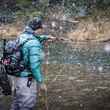

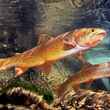
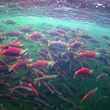



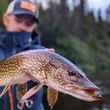
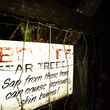


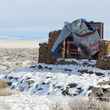
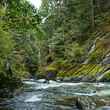



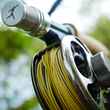
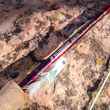



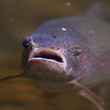
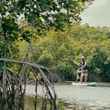

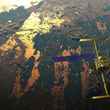
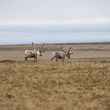
Comments
Mark van Roojen replied on Permalink
This was an interesting and well done article. It has the added advantage of bringing a bit of hopefullness into the otherwise (and still) alarming climate change picture. Thanks!
Pages